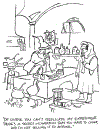Scientific integrity issues in Environmental Toxicology and Chemistry: Improving research reproducibility, credibility, and transparency
- PMID: 30609273
- PMCID: PMC7313240
- DOI: 10.1002/ieam.4119
Scientific integrity issues in Environmental Toxicology and Chemistry: Improving research reproducibility, credibility, and transparency
Abstract
High-profile reports of detrimental scientific practices leading to retractions in the scientific literature contribute to lack of trust in scientific experts. Although the bulk of these have been in the literature of other disciplines, environmental toxicology and chemistry are not free from problems. While we believe that egregious misconduct such as fraud, fabrication of data, or plagiarism is rare, scientific integrity is much broader than the absence of misconduct. We are more concerned with more commonly encountered and nuanced issues such as poor reliability and bias. We review a range of topics including conflicts of interests, competing interests, some particularly challenging situations, reproducibility, bias, and other attributes of ecotoxicological studies that enhance or detract from scientific credibility. Our vision of scientific integrity encourages a self-correcting culture that promotes scientific rigor, relevant reproducible research, transparency in competing interests, methods and results, and education. Integr Environ Assess Manag 2019;00:000-000. © 2019 SETAC.
Keywords: Bias; Reproducibility; Research integrity; Scientific integrity; Transparency.
© 2019 SETAC.
Figures




Similar articles
-
The definition of research misconduct should be stated in the abstract when reporting research on research misconduct.Account Res. 2025 May;32(4):639-647. doi: 10.1080/08989621.2024.2306538. Epub 2024 Jan 24. Account Res. 2025. PMID: 38265048
-
The Quest for Clarity in Research Integrity: A Conceptual Schema.Sci Eng Ethics. 2019 Aug;25(4):1085-1093. doi: 10.1007/s11948-018-0052-2. Epub 2018 Mar 28. Sci Eng Ethics. 2019. PMID: 29594670
-
Lack of Improvement in Scientific Integrity: An Analysis of WoS Retractions by Chinese Researchers (1997-2016).Sci Eng Ethics. 2018 Oct;24(5):1409-1420. doi: 10.1007/s11948-017-9962-7. Epub 2017 Sep 9. Sci Eng Ethics. 2018. PMID: 28889329
-
Scientific Misconduct.Annu Rev Psychol. 2016;67:693-711. doi: 10.1146/annurev-psych-122414-033437. Epub 2015 Aug 13. Annu Rev Psychol. 2016. PMID: 26273897 Review.
-
[Bad behaviors regarding research and scientific and medical publication].Rev Med Brux. 2013 Nov-Dec;34(6):491-9. Rev Med Brux. 2013. PMID: 24505870 Review. French.
Cited by
-
Reproducibility and research integrity: the role of scientists and institutions.BMC Res Notes. 2021 Dec 14;14(1):451. doi: 10.1186/s13104-021-05875-3. BMC Res Notes. 2021. PMID: 34906213 Free PMC article.
-
Avoiding Regrettable Substitutions: Green Toxicology for Sustainable Chemistry.ACS Sustain Chem Eng. 2021 Jun 14;9(23):7749-7758. doi: 10.1021/acssuschemeng.0c09435. Epub 2021 Jun 1. ACS Sustain Chem Eng. 2021. PMID: 36051558 Free PMC article.
-
Open Science in regulatory environmental risk assessment.Integr Environ Assess Manag. 2021 Nov;17(6):1229-1242. doi: 10.1002/ieam.4433. Epub 2021 May 18. Integr Environ Assess Manag. 2021. PMID: 33913617 Free PMC article.
-
Testing an active intervention to deter researchers' use of questionable research practices.Res Integr Peer Rev. 2019 Nov 29;4:24. doi: 10.1186/s41073-019-0085-3. eCollection 2019. Res Integr Peer Rev. 2019. PMID: 31798975 Free PMC article.
-
Improving natural product research translation: From source to clinical trial.FASEB J. 2020 Jan;34(1):41-65. doi: 10.1096/fj.201902143R. Epub 2019 Dec 10. FASEB J. 2020. PMID: 31914647 Free PMC article.
References
-
- [AAAS] American Association for the Advancement of Science. 2000. The role and activities of scientific societies in promoting research integrity. In: A report of a conference; 2000 Apr 10–11; Washington, DC 24 p. https://www.aaas.org/sites/default/files/content_files/The%20Role%20and%....
-
- Ågerstrand M, Sobek A, Lilja K, Linderoth M, Wendt-Rasch L, Wernersson AS, Rudén C. 2017. An academic researcher’s guide to increased impact on regulatory assessment of chemicals. Environ Sci: Processes Impacts 19(5): 644–655. - PubMed
-
- Alberts B 2012. Editor’s note [A bacterium that can grow using arsenic instead of phosphorus]. Science 334(6034): 1149.
-
- [Amnesty] Amnesty International. 2017. Mount Polley litigation summary. Ottawa (ON) [accessed 2018 Dec 1]. https://www.amnesty.ca/sites/amnesty/files/Mount%20Polley%20summary%20of...
-
- Anderson K 2017. August 15 Trust falls — Are we in a new phase of corporate research? Scholarly Kitchen [blog]. Oakbrook Terrace (IL): Society for Scholarly Publishing; https://scholarlykitchen.sspnet.org/2017/08/15/trust-falls-new-phase-cor...

